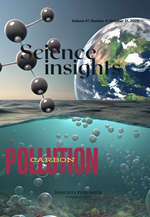Smart Materials That Self-Heal or Adapt to Environmental Stimuli
##plugins.themes.bootstrap3.article.main##
##plugins.themes.bootstrap3.article.sidebar##
Abstract
The development of smart materials capable of self-healing or adapting to environmental stimuli represents one of the most transformative advances in material science. These materials, ranging from polymers and composites to bio-inspired hydrogels, offer the potential to dramatically enhance durability, safety, and efficiency across industries, including aerospace, construction, electronics, and healthcare. Self-healing materials can autonomously repair structural damage, extend product lifespan and reduce maintenance costs, while adaptive materials respond dynamically to changes in temperature, pressure, light, pH, or mechanical stress, optimizing performance in real time. The integration of such capabilities into engineering, biomedical devices, and consumer products challenges traditional paradigms of design and maintenance, demanding new manufacturing processes and theoretical models. This article explores the principles, mechanisms, and emerging applications of smart materials, highlighting their capacity to transform technological landscapes, foster sustainability, and inspire a future in which materials are no longer passive but actively interact with their environment.
##plugins.themes.bootstrap3.article.details##
Smart Materials, Self-Healing, Adaptive Materials, Stimuli-Responsive Polymers, Material Innovation
No funding source declared.
Arevalo, S., & Buehler, M. J. (2023). Learning from nature by leveraging integrative biomateriomics modeling toward adaptive and functional materials. MRS Bulletin, 48(11), 1140–1152. DOI: https://doi.org/10.1557/s43577-023-00610-8
Bertsch, P., Diba, M., Mooney, D., & Leeuwenburgh, S. C. G. (2022). Self-healing injectable hydrogels for tissue regeneration. Chemical Reviews, 123(2), 834–885. DOI: https://doi.org/10.1021/acs.chemrev.2c00179
Geng, Y., Jia, Z., & Li, L. (2023). Structural engineered living materials. Nano Research, 17(2), 715–738. DOI: https://doi.org/10.1007/s12274-023-6313-7
Guo, K., Yang, Z., Yu, C., & Buehler, M. J. (2020). Artificial intelligence and machine learning in design of mechanical materials. Materials Horizons, 8(4), 1153–1171. DOI: https://doi.org/10.1039/d0mh01451f
Haines-Gadd, M., Charnley, F., & Encinas-Oropesa, A. (2021). Self-healing materials: A pathway to immortal products or a risk to circular economy systems? Journal of Cleaner Production, 315, 128193. DOI: https://doi.org/10.1016/j.jclepro.2021.128193
Hammer, P., Uvida, M. C., & Trentin, A. (2022). Self-healing organic-inorganic coatings. Coatings, 12(11), 1668. DOI: https://doi.org/10.3390/coatings12111668
Ibn-Mohammed, T., Mustapha, K. B., Abdulkareem, M., Fuensanta, A. U., Pecunia, V., & Dancer, C. E. J. (2023). Toward artificial intelligence and machine learning-enabled frameworks for improved predictions of lifecycle environmental impacts of functional materials and devices. MRS Communications, 13(5), 795–808. DOI: https://doi.org/10.1557/s43579-023-00480-w
Jiang, L., Wu, M., Fei, D., Chen, D., Xiao, L., Chen, W., Du, W., & Ding, Q. (2024). State-of-the-art review of microcapsule self-repairing concrete: Principles, applications, test methods, prospects. Polymers, 16(22), 3165. DOI: https://doi.org/10.3390/polym16223165
Kanter, A.-F. J. de, Jongsma, K., Bouten, C. V. C., & Bredenoord, A. L. (2023). How smart are smart materials? A conceptual and ethical analysis of smart lifelike materials for the design of regenerative valve implants. Science and Engineering Ethics, 29, 105. DOI: https://doi.org/10.1007/s11948-023-00453-1
Kartsonakis, I. A., Kontiza, A., & Kanellopoulou, I. A. (2024). Advanced micro/nanocapsules for self-healing coatings. Applied Sciences, 14(18), 8396. DOI: https://doi.org/10.3390/app14188396
Kim, S., Jeon, H., Koo, J. M., Oh, D. X., & Park, J. (2024). Practical applications of self-healing polymers beyond mechanical and electrical recovery. Advanced Science, 11(16), 2302463. DOI: https://doi.org/10.1002/advs.202302463
Lin, X., Wang, X., Zeng, L., Wu, Z. L., Guo, H., & Hourdet, D. (2021). Stimuli-responsive toughening of hydrogels. Chemistry of Materials, 33(19), 7633–7645. DOI: https://doi.org/10.1021/acs.chemmater.1c01019
Liu, J., Li, X., Yang, X., & Zhang, X. (2021). Recent advances in self-healable intelligent materials enabled by supramolecular crosslinking design. Advanced Intelligent Systems, 3(5), 2000183. DOI: https://doi.org/10.1002/aisy.202000183
Liu, Y., & Hsu, S. (2018). Synthesis and biomedical applications of self-healing hydrogels. Frontiers in Chemistry, 6, 449. DOI: https://doi.org/10.3389/fchem.2018.00449
Nadim, E., Major, I., Devine, D. M., & Paraskar, P. M. (2025). Biobased self-healing functional composites and their applications. Journal of Materials Research and Technology, 6(1), 65. DOI: https://doi.org/10.1186/s42252-025-00065-x
Stuart-Fox, D., Ng, L., Barner, L., Bennett, A. T. D., Blamires, S. J., Elgar, M. A., Evans, A. R., Franklin, A. M., Hölttä-Otto, K., Hutchison, J. A., Jativa, F., Jessop, A.-L., Kelley, J. L., McGaw, J., Mei, J., Mirkhalaf, M., Musameh, M., Neto, C., O’Connor, A. J., … Wong, W. W. H. (2023). Challenges and opportunities for innovation in bioinformed sustainable materials. Communications Materials, 4(1), 405. DOI: https://doi.org/10.1038/s43246-023-00405-z
Tan, Y. J., Susanto, G. J., Ali, H. P. A., & Tee, B. C. K. (2020). Progress and roadmap for intelligent self-healing materials in autonomous robotics. Advanced Materials, 33(19), 2002800. DOI: https://doi.org/10.1002/adma.202002800
Tan, Y. J., Wu, J., Li, H., & Tee, B. C. K. (2018). Self-healing electronic materials for a smart and sustainable future. ACS Applied Materials & Interfaces, 10(18), 15331–15349. DOI: https://doi.org/10.1021/acsami.7b19511
Tolvanen, J., Nelo, M., Alasmäki, H., Siponkoski, T., Mäkelä, P., Vahera, T., Hannu, J., Juuti, J., & Jantunen, H. (2022). Ultraelastic and high-conductivity multiphase conductor with universally autonomous self-healing. Advanced Science, 9(36), 2205485. DOI: https://doi.org/10.1002/advs.202205485
Wang, B., Lee, T. L., & Yang, Q. (2023). Advances in smart materials and structures. Materials, 16(22), 7206. DOI: https://doi.org/10.3390/ma16227206
Wu, J., Mu, C., & Yang, J. (2020). Reversible visible/near-infrared light responsive thin films based on indium tin oxide nanocrystals and polymer. Scientific Reports, 10(1), 13425. DOI: https://doi.org/10.1038/s41598-020-69110-y
Xia, X., Spadaccini, C. M., & Greer, J. R. (2022). Responsive materials architected in space and time. Nature Reviews Materials, 7(9), 683–705. DOI: https://doi.org/10.1038/s41578-022-00450-z
Yoon, S., Choi, J. H., Sung, B. J., Bang, J., & Kim, T. A. (2022). Mechanochromic and thermally reprocessable thermosets for autonomic damage reporting and self-healing coatings. NPG Asia Materials, 14, 6. DOI: https://doi.org/10.1038/s41427-022-00406-3
Zheng, N., Xu, Y., Zhao, Q., & Xie, T. (2021). Dynamic covalent polymer networks: A molecular platform for designing functions beyond chemical recycling and self-healing. Chemical Reviews, 121(3), 1716–1745. DOI: https://doi.org/10.1021/acs.chemrev.0c00938

This work is licensed under a Creative Commons Attribution-NonCommercial 4.0 International License.

